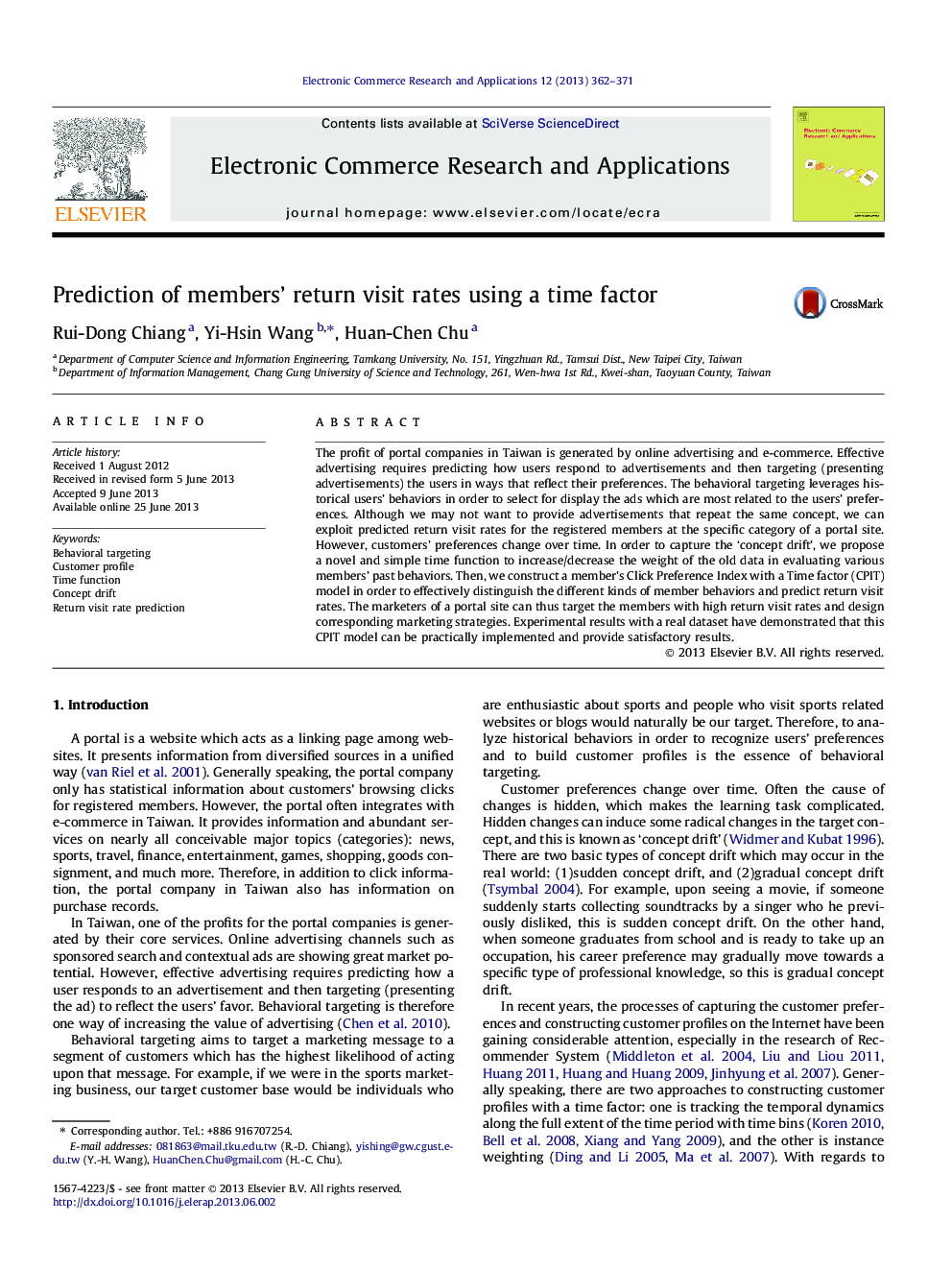| Article ID | Journal | Published Year | Pages | File Type |
|---|---|---|---|---|
| 379717 | Electronic Commerce Research and Applications | 2013 | 10 Pages |
•The method is easy-utilize and low-complexity for the return visit rate prediction.•We propose a novelty time function.•The method could be effectively applied in marketing strategy design.
The profit of portal companies in Taiwan is generated by online advertising and e-commerce. Effective advertising requires predicting how users respond to advertisements and then targeting (presenting advertisements) the users in ways that reflect their preferences. The behavioral targeting leverages historical users’ behaviors in order to select for display the ads which are most related to the users’ preferences. Although we may not want to provide advertisements that repeat the same concept, we can exploit predicted return visit rates for the registered members at the specific category of a portal site. However, customers’ preferences change over time. In order to capture the ‘concept drift’, we propose a novel and simple time function to increase/decrease the weight of the old data in evaluating various members’ past behaviors. Then, we construct a member’s Click Preference Index with a Time factor (CPIT) model in order to effectively distinguish the different kinds of member behaviors and predict return visit rates. The marketers of a portal site can thus target the members with high return visit rates and design corresponding marketing strategies. Experimental results with a real dataset have demonstrated that this CPIT model can be practically implemented and provide satisfactory results.
